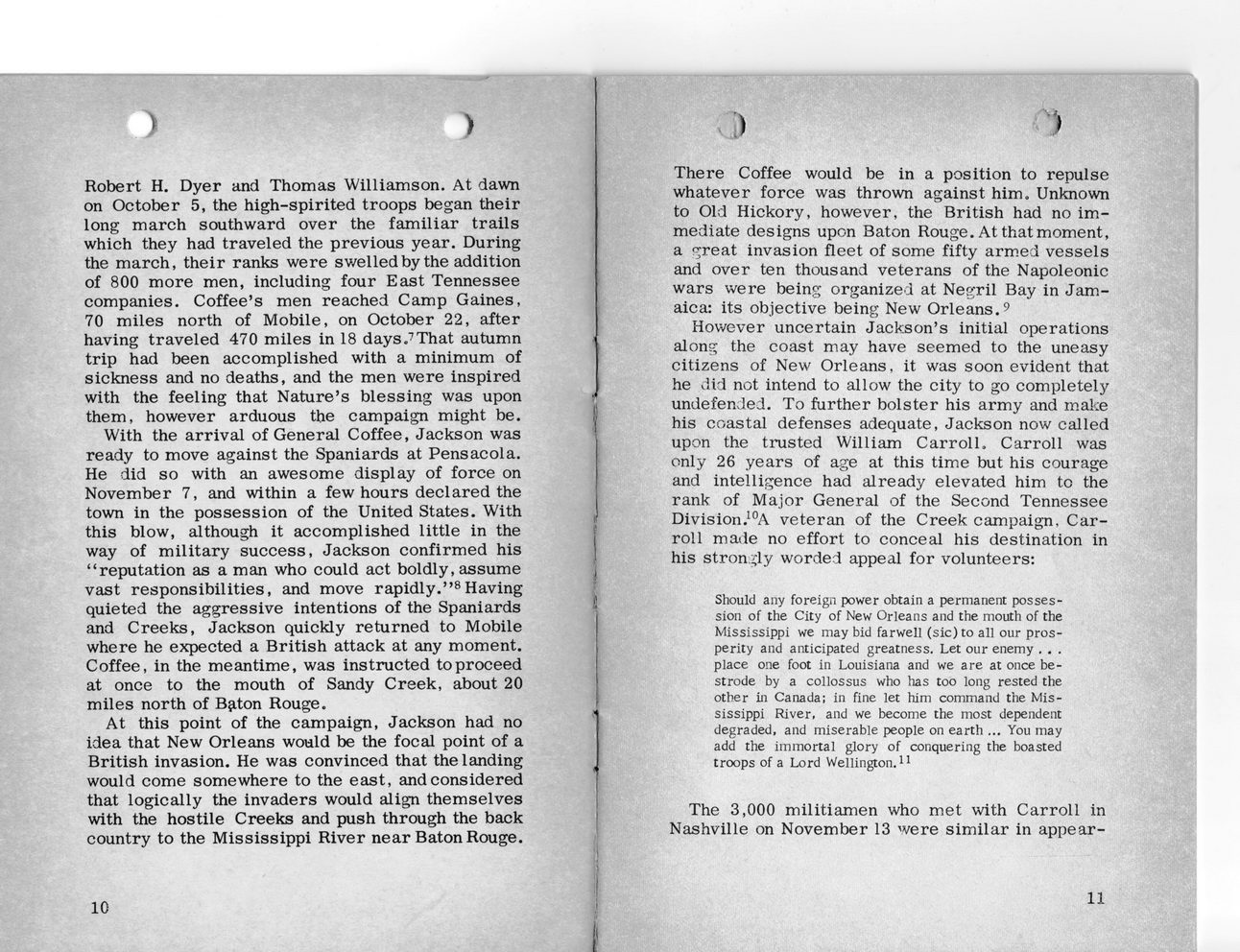This text was obtained via automated optical character recognition.
It has not been edited and may therefore contain several errors.
> > Robert H. Dyer and Thomas Williamson. At dawn on October 5, the high-spirited troops began their long march southward over the familiar trails which they had traveled the previous year. During the march, their ranks were swelled by the addition of 800 more men, including four East Tennessee companies. Coffee?s men reached Camp Gaines, 70 miles north of Mobile, on October 22, after having traveled 470 miles in 18 days.7That autumn trip had been accomplished with a minimum of sickness and no deaths, and the men were inspired with the feeling that Nature?s blessing was upon them, however arduous the campaign might be. With the arrival of General Coffee, Jackson was ready to move against the Spaniards at Pensacola. He did so with an awesome display of force on November 7, and within a few hours declared the town in the possession of the United States. With this blow, although it accomplished little in the way of military success, Jackson confirmed his ?reputation as a man who could act boldly, assume vast responsibilities, and move rapidly.?8Having quieted the aggressive intentions of the Spaniards and Creeks, Jackson quickly returned to Mobile where he expected a British attack at any moment. Coffee, in the meantime, was instructed to proceed at once to the mouth of Sandy Creek, about 20 miles north of Briton Rouge. At this point of the campaign, Jackson had no idea that New Orleans would be the focal point of a British invasion. He was convinced that the landing would come somewhere to the east, and considered that logically the invaders would align themselves with the hostile Creeks and push through the back country to the Mississippi River near Baton Rouge. 10 ) There Coffee would be in a position to repulse whatever force was thrown against him. Unknown to Old Hickory, however, the British had no immediate designs upon Baton Rouge. At that moment, a ^reat invasion fleet of some fifty armed vessels and over ten thousand veterans of the Napoleonic wars were being organized at Ner^ril Bay in Jamaica: its objective being New Orleans.9 However uncertain Jackson?s initial operations along the coast may have seemed to the uneasy citizens of New Orleans, it was soon evident that he did not intend to allow the city to go completely undefended. To further bolster his army and make his coastal defenses adequate, Jackson now called upon the trusted William Carroll. Carroll was only 26 years of age at this time but his courage and intelligence had already elevated him to the rank of Major General of the Second Tennessee Division.10A veteran of the Creek campaign, Carroll made no effort to conceal his destination in his strongly worded appeal for volunteers: Should any foreign power obtain a permanent possession of the City of New Orleans and the mouth of the Mississippi we may bid farwell (sic) to all our prosperity and anticipated greatness. Let our enemy . . . place one foot in Louisiana and we are at once bestrode by a collossus who has too long rested the other in Canada; in fine let him command the Mississippi River, and we become the most dependent degraded, and miserable people on earth ... You may add the immortal glory of conquering the boasted troops of a Lord Wellington.11 The 3,000 militiamen who met with Carroll in Nashville on November 13 were similar in appear- 11

Battle of 1814 11